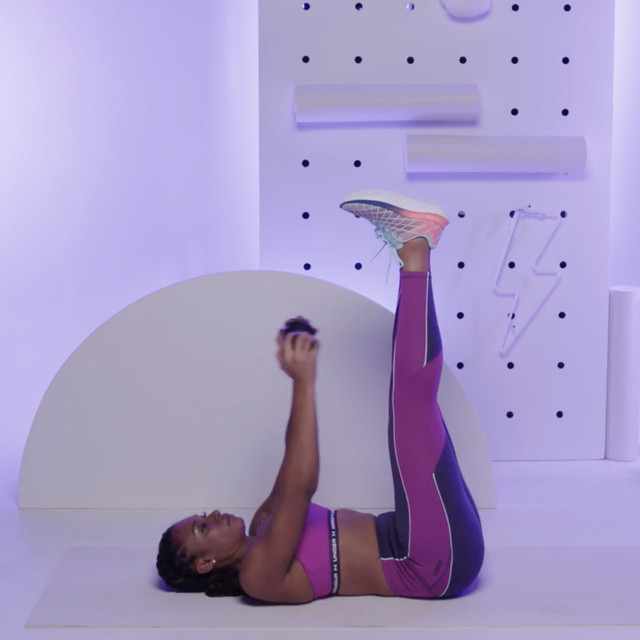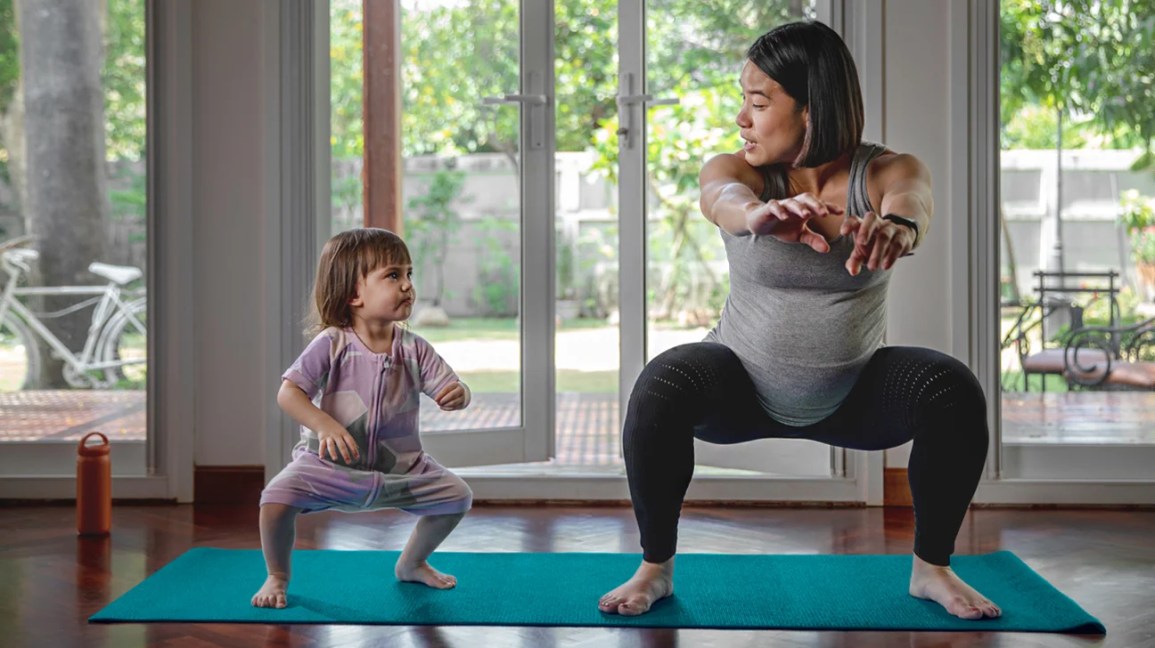Dynamic stretching and a light aerobic activity are the best warm-up exercises for runners. These prepare the muscles and cardiovascular system for the demands of running.
Preparing your body for a run is crucial for performance and injury prevention. Warming up increases blood flow, enhances flexibility, and helps you mentally gear up for the workout ahead. As a runner, you should aim to incorporate a routine that activates your muscles, boosts your heart rate, and loosens your joints.
This can make all the difference in not only how you perform but also how you recover. Consistently implementing effective warm-up exercises can lead to better runs and a reduced risk of strain or injury. Remember, starting each run with a proper warm-up is an investment in your running longevity and overall health.

Credit: runninforsweets.com
Importance Of Warm-ups For Runners
Warm-ups for runners are crucial in prepping the body for the impact of running. This initial stage serves to gradually increase heart rate, body temperature, and blood flow to the muscles. Proper warming up can significantly reduce the risk of injury and enhance overall performance. It’s important to focus on exercises that mirror running mechanics to get the full benefit.
Injury Prevention Through Proper Warm-ups
Implementing a strategic warm-up routine can mean the difference between a successful run and time off due to injury. A solid regimen prepares your tendons and ligaments for the high-impact nature of running, which can reduce the chance of sprains, strains, and other common injuries.
- Start with 5-10 minutes of light jogging or brisk walking.
- Move on to gentle dynamic stretches like leg swings and lunges.
- Focus on activating key muscle groups used in running.
Enhancing Performance With Dynamic Stretches
Dynamic stretches can boost your running performance by improving flexibility and increasing range of motion. These stretches are active movements that help your muscles find their optimal length before hitting the pavement.
| Dynamic Stretch | Benefits |
|---|---|
| High Knees | Increases heart rate, warms up the hip flexors. |
| Butt Kicks | Engages hamstrings, enhances foot speed. |
| Side Shuffles | Activates outer thigh muscles, improves agility. |
Build these stretches into your pre-run routine for a noticeable impact on speed, endurance, and mobility.
Types Of Warm-up Exercises
Before hitting the pavement or taking to the trails, runners know the importance of warming up. Warm-up exercises prepare the body for the demands of running, reducing the risk of injury and enhancing performance. Let’s delve into the different types of warm-up exercises that can set the stage for a great run.
Static Vs. Dynamic Stretching
Static stretching involves holding a stretch for a prolonged period, often while the body is at rest. It’s beneficial for cooling down after a workout rather than warming up.
In contrast, dynamic stretching includes active movements where muscles go through their full range of motion. These stretches are ideal for warming up as they increase blood flow, improve flexibility, and ready the muscles for activity.
- Leg swings
- Lunges with a twist
- High knees
Cardio-based Warm-ups: Pros And Cons
Cardio-based warm-ups elevate the heart rate and are perfect before a running session. Some effective routines include:
- Jump rope – boosts coordination
- Brisk walking – eases the body into movement
- Light jogging – transitions smoothly to running
| Warm-Up | Pros | Cons |
|---|---|---|
| Jump Rope | Improves agility and stamina | May strain unprepared muscles |
| Brisk Walking | Low impact, suitable for beginners | Less intense for advanced runners |
| Light Jogging | Mimics running motion | Can be monotonous |
Top Warm-up Routines Before Running
Running is more than hitting the pavement. It’s about preparing your body for the challenges ahead. Dynamic warm-ups increase blood flow, improve flexibility, and reduce injury risk. Try these proven exercises to prime your muscles for peak performance.
Leg Swings For Hip Mobility
Leg swings are a simple yet effective way to enhance hip mobility. They prep your hips for the range of motion required during a run. Here’s how to do them:
- Stand next to a wall or pole for balance.
- Swing one leg forward and back, gradually increasing the height.
- Repeat for 15 swings on each leg.
Lunges For Leg Strength And Balance
Lunges are a powerful warm-up to build strength and stability in your legs. They also enhance balance. Follow these steps for proper lunges:
- Start with your feet together.
- Step forward with one foot into a lunge.
- Keep your back straight and lower your hips.
- Push back up and repeat, alternating legs.
Do 10 lunges on each leg for a well-rounded warm-up.

Credit: ru.pinterest.com
Warm-up Time: How Much Is Enough?
Before you hit the track, the right warm-up can set the pace for a great run. But how long should you dedicate to getting your muscles and heart rate ready? Understanding the sweet spot for pre-run warm-ups ensures your body is geared up and guarded against injuries.
Optimal Duration For Pre-run Warm-ups
A common question runners ask is, “How long should I warm up?” Here’s what you need to know:
- 5 to 10 minutes is often enough for most runners.
- Long-distance runners might need a longer warm-up.
- A quick warm-up prepares the body more than no warm-up at all.
Keep it short and sweet, yet effective to start your run on the right foot.
The Role Of Warm-up Intensity
Not only the duration but also the intensity of your warm-up plays an integral role.
| Warm-Up Type | Intensity | Duration |
|---|---|---|
| Dynamic stretches | Moderate | 5 minutes |
| Jogging | Low | 5 minutes |
| High knees | High | 2-3 minutes |
Start with lower intensity and progress to higher to pump your heart rate up gradually. This will boost performance and prevent strain.
Cooling Down: The Other Half Of Running
Many runners focus on the start. They talk about the rush as their feet hit the track. Yet, a proper cool down often gets overlooked. Cooling down is crucial. It helps your body transition back to rest. It’s as important as the run itself.
Benefits Of Post-run Stretches
After a run, your muscles are warm and flexible. Stretching helps them recover. Here are key benefits:
- Reduces muscle soreness: Stretching soothes tight muscles.
- Improves flexibility: Regular stretching increases range of motion.
- Lowers injury risk: Flexible muscles are less prone to injury.
- Relaxes your body: Cooling down calms your heart rate and breathing.
Effective Cool Down Exercises
Here’re simple exercises to wrap up your running session. They’re quick and easy. Aim for 5 to 10 minutes.
| Exercise | Duration | Focus Area |
|---|---|---|
| Walking | 5 mins | Overall cool down |
| Quad Stretch | 30 secs each side | Thighs |
| Hamstring Stretch | 30 secs each side | Back of legs |
| Calf Stretch | 30 secs each side | Lower leg |
| Shoulder Stretch | 30 secs each side | Shoulders |
Tailoring Your Warm-up To Your Running Routine
Runners know that a proper warm-up is key to a good run. Customizing your warm-up to fit your specific routine helps prevent injuries and improves performance. Whether you’re gearing up for a brisk sprint or a long jog, tailoring your approach ensures your body is ready.
Adjusting Warm-ups For Speed Work Vs. Long-distance
Speed work and long-distance runs put different demands on your body. Recognizing this, your warm-up should cater to the type of run ahead.
- For speed work: Focus on dynamic exercises. Include high knees, butt kicks, and leg swings.
- For long distance: Incorporate a slow jog, followed by gradual dynamic stretches to elevate heart rate gently.
Personalizing Warm-up Intensity And Duration
Your body’s needs change daily. Listen to it. Adjust the intensity and duration of your warm-up accordingly.
| Intensity | Duration |
|---|---|
| Light Day | 5 minutes |
| Regular Training | 10-15 minutes |
| Intense Session | 20+ minutes |

Credit: therunnerdoc.com
Frequently Asked Questions Of Best Warm Up Exercises For Runners
What Is A Good Warm Up Routine For Running?
A good warm-up routine for running includes dynamic stretches, such as leg swings and lunges, combined with a five-minute brisk walk or light jog to increase heart rate and loosen muscles.
What Exercises Should I Do Before Running?
Before running, perform dynamic stretches like leg swings and lunges, along with a light jog to warm up your muscles. Include walking high knees and butt kicks to boost mobility.
How Do I Warm Up Before A 10k Run?
Start with a 5-10 minute brisk walk or light jog to elevate your heart rate. Follow with dynamic stretches focusing on leg muscles, like lunges and leg swings. Finish with a few short, faster-paced runs to prepare your body for the 10k pace.
Is A 5 Minute Run A Good Warm Up?
Yes, a 5-minute run can serve as an effective warm-up to increase heart rate and prepare muscles for more intense activity. It’s important to adjust intensity based on your fitness level.
Conclusion
Embracing the right warm-up exercises is essential for any runner’s routine. By focusing on dynamic stretches and gradual cardio, you optimize performance and minimize injury. Remember, these movements prep your muscles and propel you towards peak running form. Stay consistent, and you’ll feel the difference with each stride!


